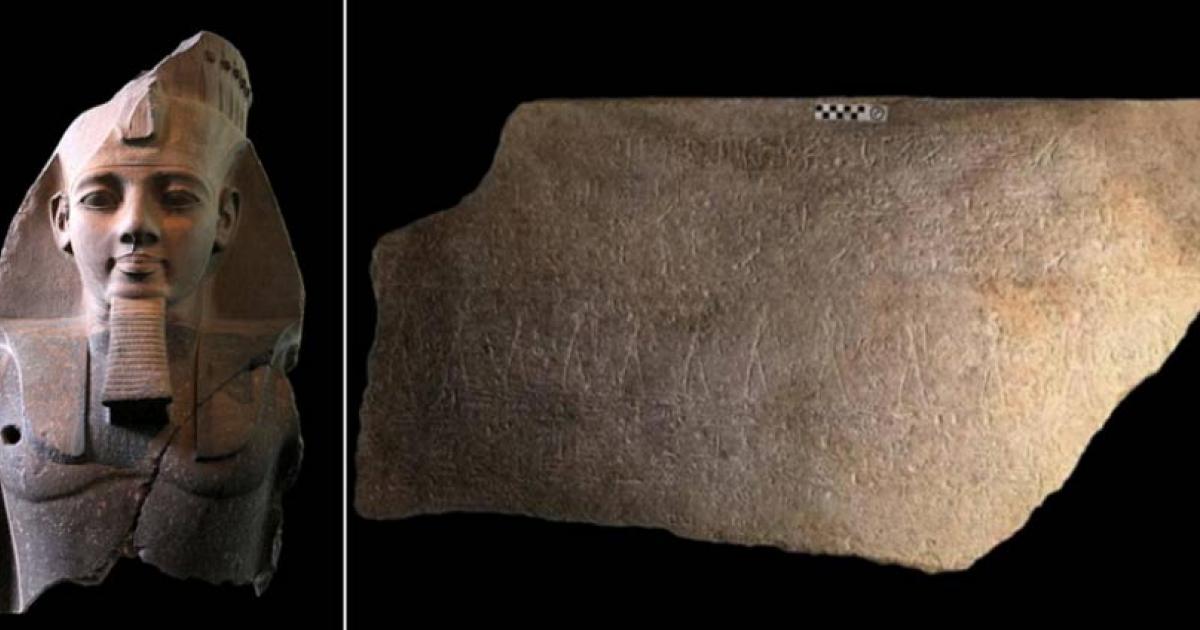
Ramesses II - Original Sarcophagus Identified Within the Valley of Kings
Archaeologists from Sorbonne University have identified the original sarcophagus of Ramesses II, or Ramesses the Great, from a tomb complex designated KV7 in the Valley of Kings. This tomb was near the tomb of his sons (KV5) and the tomb (KV8) of his son and successor, Merneptah. His final resting place was in tomb TT320, near Deir el-Bahari in the Theban Necropolis opposite Luxor.
Ramesses II: One of Egyptian History’s Most Celebrated Pharaohs
Ramesses II was the third pharaoh of the 19th Dynasty during the New Kingdom period, and his reign is often celebrated as one of the most illustrious in Egypt’s history, distinguished by significant military campaigns and numerous monumental construction projects.
Historical records suggest that Ramesses II ascended to the throne in 1279 BC and ruled until his death around 1212 or 1213 BC at the age of approximately 90, according to the study published in Revue d’Egyptologie.

Ramesses II passport photo, issued in 1975 when his mummy left the country for cleaning in France. (Public Domain)
During the reign of Ramesses III in the 20th Dynasty, the tomb of Ramesses II was looted. Ancient texts indicate that priests moved his remains first to the tomb of Queen Ahmose Inhapy, and later to the tomb of the high priest Pinedjem II.
The aforementioned tomb TT320 is a Royal Cache that contains the mummified remains of over 50 kings, queens, and other royal family members from the New Kingdom period.
The mummy of Ramesses II was discovered in TT320 during excavations in 1881, placed in a simple wooden coffin, indicating a temporary solution until a more permanent resting place could be arranged. The study suggests that a fragment of a sarcophagus discovered in 2009 at Abydos was originally part of the sarcophagus of Ramesses II, reports Archaeology News.

Long side of the granite sarcophagus of Ramesses II. (Kevin Cahail/ Revue d’Egyptologie)
A Great Discovery
This granite sarcophagus fragment, found in a Coptic monastery, was recently re-examined by Egyptologist Frédéric Payraudeau from Sorbonne University, after its initial discovery by Ayman Damarani and Kevin Cahail. According to Payraudeau, the decoration and texts on the fragment indicate that it was first used by Ramesses II, evidenced by his cartouche, and later repurposed by a high priest of the 21st Dynasty, Menkheperre (circa 1000 BC), who likely transported the sarcophagus to Abydos after KV7 was looted.
“The quality of the craftsmanship and the specific references to deities like Ra and Osiris strongly indicate that this sarcophagus was initially intended for Ramesses II,” Payraudeau was quoted by Archaeology Mag.
However, the original owner remained unidentified until Payraudeau’s detailed analysis revealed the cartouche of Ramesses II. This critical discovery confirmed that the fragment was part of the pharaoh’s original burial container.

Tomb of Rameses II, KV7, the entrance to the fourth corridor which descends further into the tomb towards a vestibule and the burial chamber. Valley of the Kings, Egypt. (Dennis Jarvis from Halifax, Canada/ CC BY-SA 2.0)
Preservation Techniques: Mummifying the Dead
This discovery highlights the extensive efforts made by ancient Egyptians to safeguard the remains of their significant rulers. As popularly known, central to these practices was mummification, an elaborate process that involved removing internal organs, treating the body with natron to dehydrate it, and wrapping it in linen. This was aimed to preserve the body for eternity, reflecting the belief that physical preservation was essential for the soul’s survival in the afterlife.
Even the decision to bury pharaohs in the Valley of Kings came later, and was borne out of a desire for preservation. Here, hidden rock-cut tombs were created to protect against grave robbers. These tombs were elaborately decorated with texts and images from the Book of the Dead and other religious texts, designed to guide and protect the deceased in the afterlife. The choice of more concealed burial sites reflected an evolution in the approach to protecting royal remains.
It also illustrates the practice of later rulers repurposing funerary objects. For instance, during the 21st Dynasty, high priest Menkheperre and Pharaoh Psusennes I reused sarcophagi from earlier dynasties, reflecting a period of resourcefulness amidst tomb looting.
The identification of the sarcophagus was facilitated by advanced imaging techniques and material analysis. These technologies allowed researchers to authenticate the fragment and accurately decipher its inscriptions.
Top image: Left; Ramesses II statue, Right; Long side of the granite sarcophagus of Ramesses II. Source: Left; British Museum/CC BY-SA 2.0 FR, Right; Kevin Cahail/ Revue d’Egyptologie
By Sahir Pandey
References
Milligan, M. 2024. Archaeologists identify the original sarcophagus of Ramesses II . Available at: https://www.heritagedaily.com/2024/05/archaeologists-identify-the-original-sarcophagus-of-ramesses-ii/152015.
Payraudeau, F. 2024. Le sarcophage de Ramsès II remployé à Abydos! Revue d’Egyptologie, 73. Available at: https://doi.10.2143/RE.73.0.3292985.
Radley, D. 2024. Archaeologists have identified the original sarcophagus of pharaoh Ramesses II . Available at: https://archaeologymag.com/2024/05/original-sarcophagus-of-ramesses-ii/.
















Comments
When you look at the mummy, you’re looking into the face of the Pharaoh written about in the Bible. It’s humbling and astonishing.